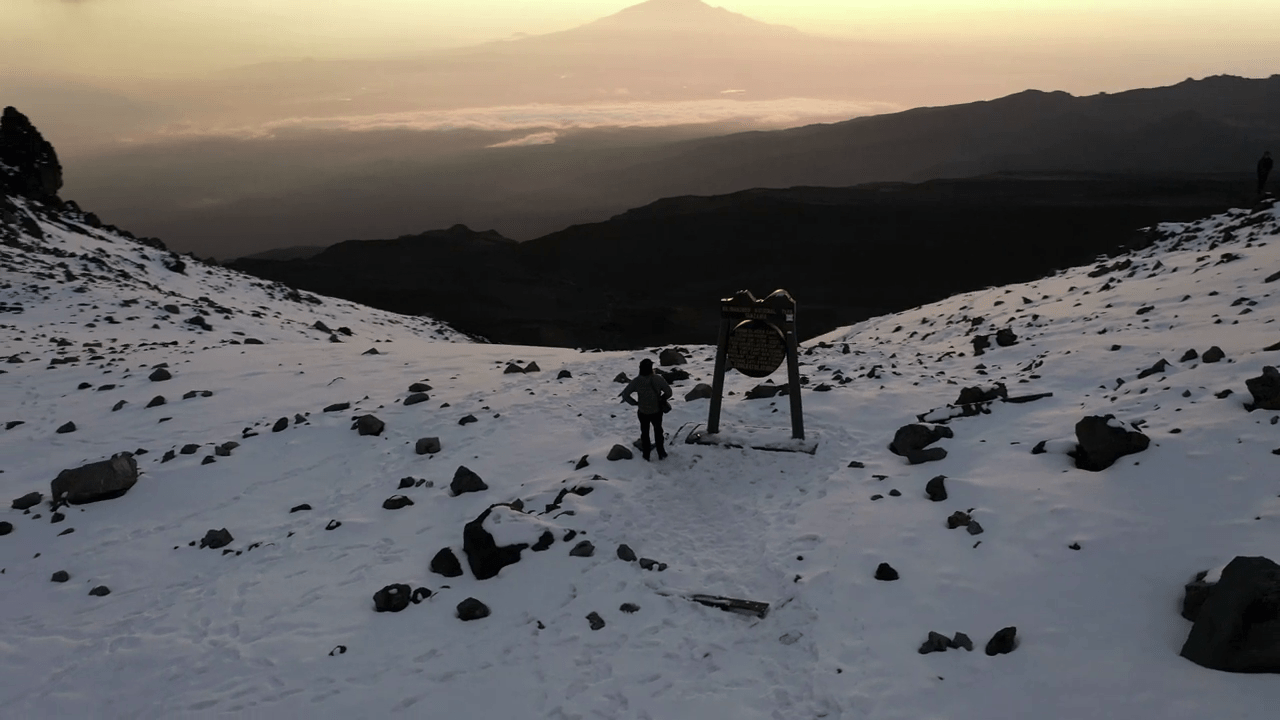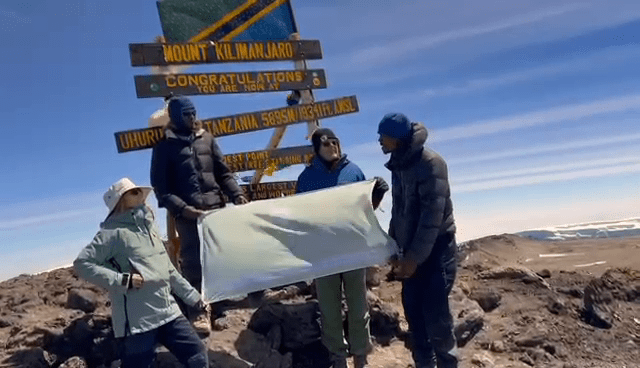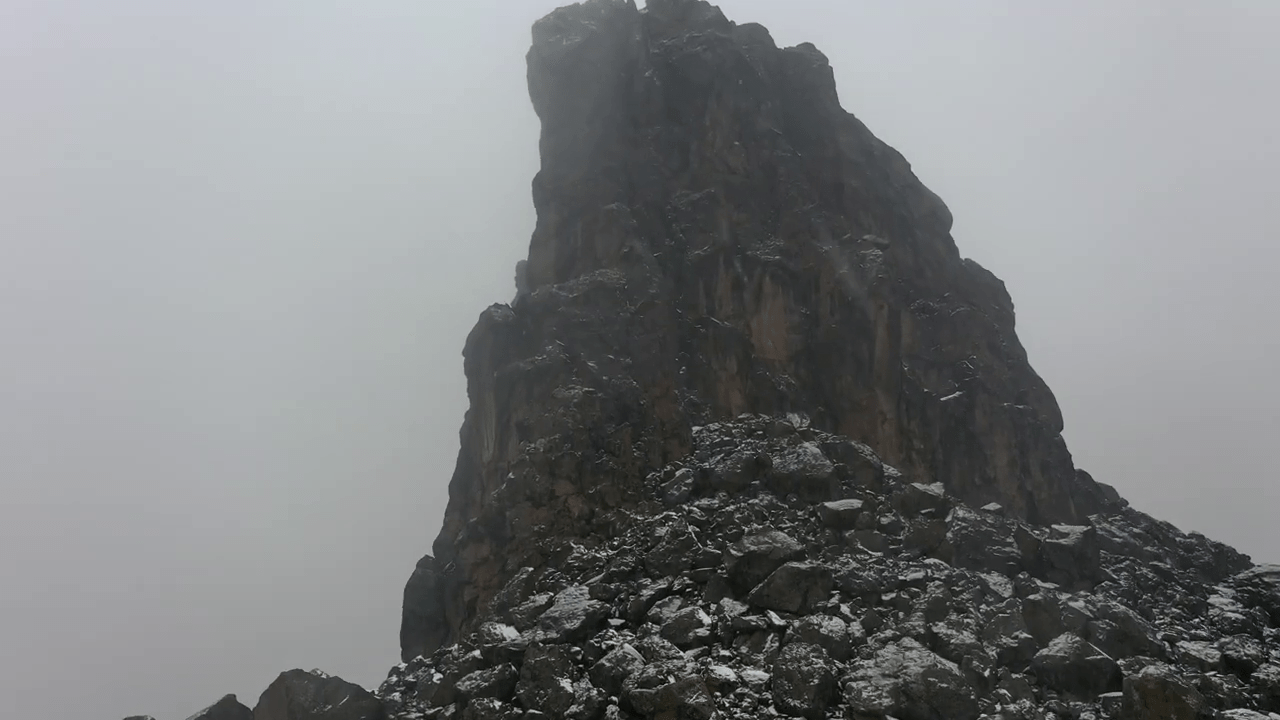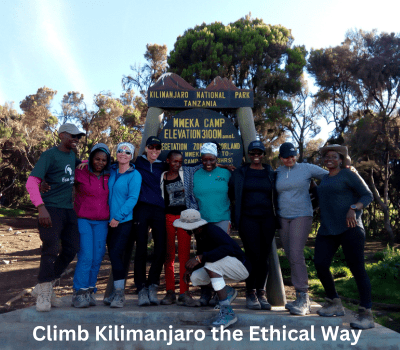What are the Risks Associated with Climbing Kilimanjaro Africa

Introduction
Climbing Mount Kilimanjaro is one of the greatest adventures on Earth. It’s a non-technical trek, meaning you don’t need ropes or climbing gear. But that doesn’t mean it’s risk-free. Thousands of people attempt to summit Africa’s tallest peak every year — and while most succeed safely, others face challenges that can turn serious if not managed properly.
So what are the risks associated with climbing Kilimanjaro Africa? In this article, we’ll break it all down: altitude dangers, weather, physical strain, logistical errors, and even psychological stress. We’ll also show you exactly how to minimize these risks and why choosing a responsible operator like Eco-Africa Climbing is your best defense.
Altitude Sickness: The #1 Risk
The biggest and most common danger on Kilimanjaro is Acute Mountain Sickness (AMS), caused by rapid ascent to high altitude. As you climb above 2,500 meters (8,200 feet), the oxygen in the air drops dramatically. Kilimanjaro’s summit, Uhuru Peak, is at 5,895 meters (19,341 feet) — that’s half the oxygen level you’re used to at sea level.
Symptoms of AMS:
- Headache
- Nausea or vomiting
- Dizziness or lightheadedness
- Fatigue and difficulty sleeping
- Loss of appetite
In serious cases, AMS can progress to HAPE (High Altitude Pulmonary Edema) or HACE (High Altitude Cerebral Edema) — both life-threatening conditions. That’s why you need trained guides who can detect symptoms early and act fast.
At Eco-Africa Climbing, all guides are certified in high-altitude first aid. They conduct twice-daily health checks with a pulse oximeter and carry emergency oxygen and Diamox to manage altitude symptoms.
Want to know more about acclimatization and prevention? Read this:
Kilimanjaro Altitude Sickness Guide
Weather and Hypothermia
The climate on Kilimanjaro changes dramatically as you climb. From humid rainforest at the base to arctic-like cold at the summit, the weather can shift from sunshine to snowfall in a matter of hours. This unpredictability creates the second biggest risk: hypothermia.
Summit night is the coldest part of the climb, often dropping to -10°C to -20°C (14°F to -4°F). Without proper layers, gloves, and a quality sleeping bag, your body could lose heat faster than it can produce — putting you in danger.
How to prevent hypothermia:
- Layer your clothing — base, insulation, and waterproof outer layer
- Wear a hat, gloves, thermal socks, and neck gaiter
- Sleep in a 4-season sleeping bag rated at -10°C or lower
- Stay dry — moisture is your enemy at altitude
Need help packing for the cold? Use this expert checklist from Eco-Africa:
What to Pack for Kilimanjaro
Physical Overexertion and Injuries
Climbing Kilimanjaro is a trek, not a technical climb, but it’s still physically demanding. You’ll walk 5–10 hours a day, often uphill, at high altitude, with limited oxygen. Fatigue, muscle soreness, and overexertion are common — especially on summit night when you’re climbing in the dark, cold, and thin air.
Injuries like twisted ankles, blisters, and knee pain can affect your performance or force you to descend. That’s why proper training, trekking poles, and the right boots are essential.
Need help with fitness? Follow this:
12-Week Kilimanjaro Training Program
And make sure you know what to carry daily:
Kilimanjaro Day Pack List
Sanitation and Hygiene Risks
Another often-overlooked risk on Kilimanjaro is poor sanitation. While trekking for 6 to 9 days without access to full facilities, cleanliness is essential to avoid gastrointestinal issues like diarrhea or food poisoning — both of which can ruin your climb or even force evacuation.
Here are the main concerns:
- Shared toilets: Public camp toilets can be unsanitary. Choose a company that offers private portable toilets like Eco-Africa Climbing.
- Water safety: Always drink treated, filtered, or boiled water. Never from streams.
- Food handling: You need trained chefs and clean kitchen gear. Poorly handled food is a health hazard.
Want to know what bathroom setups look like on the mountain? Check this out:
Bathrooms on Kilimanjaro
Your operator’s hygiene standards are critical — make sure you pick a crew like Eco-Africa that prioritizes cleanliness and safe food.
Medical Emergencies and Response Time
At high altitude, even minor medical issues can escalate quickly. An untreated infection, dehydration, or altitude reaction can become serious within hours. That’s why you need a team trained in wilderness medicine and equipped for emergencies.
Here’s what a responsible company like Eco-Africa Climbing brings:
- Emergency oxygen on every trek
- Pulse oximeter for daily health checks
- Guides certified in Wilderness First Responder (WFR)
- Protocols for descending immediately if symptoms worsen
In remote areas with no vehicle access, a fast, organized evacuation could save your life. That brings us to the next point.
Helicopter Evacuation: The Lifesaving Option
In the event of a severe medical emergency, Kilimanjaro offers a rescue helicopter service coordinated by Kilimanjaro Search and Rescue (KSAR). But not every operator includes this option or knows how to use it. You need a partner who does.
Eco-Africa Climbing works closely with KSAR and is fully set up to initiate helicopter rescue via GPS location and radio communication.
How does helicopter evacuation work?
- Available for altitudes up to 4,900 meters (Barafu Camp and below)
- Requires travel insurance that covers high-altitude trekking
- Fast response time if coordinated by a trained team
Before your climb, make sure your travel insurance includes evacuation and emergency care. It’s non-negotiable.
Mental and Emotional Strain
Mental fatigue is an underrated challenge on Kilimanjaro. Being cold, tired, and oxygen-deprived for several days can affect your mood, focus, and decision-making. Some climbers experience anxiety or even panic, especially during summit night.
Having an emotionally intelligent guide and supportive team helps. At Eco-Africa Climbing, guides are trained not just in mountain safety, but in empathy. They know when to push, when to encourage, and when to step in.
- Daily briefings keep you mentally prepared
- Summit night is managed with constant encouragement
- Group climbs offer community support and morale boosts
Solo climber? Private climbs with full support are available too:
Contact Eco-Africa Climbing
Trail Conditions and Environmental Hazards
Although Kilimanjaro is a non-technical climb, the condition of the trails can vary drastically depending on the weather, route, and time of year. Trail-related risks include:
- Loose gravel: Especially on summit night, the scree slopes are unstable and slippery.
- Mud and wet paths: During the rainy seasons (April–May, November), trails can become dangerously slick.
- Rocky sections: Especially at Barranco Wall and parts of the Machame route.
Proper footwear with strong ankle support, trekking poles, and a steady pace will help avoid slips and falls. A good operator will also brief you daily on trail conditions and advise how to handle each section.
Get updated conditions here:
Kilimanjaro Trail Condition
Campsite Safety and Sleeping Risks
You’ll be camping for several nights on the mountain, usually in high-altitude environments where temperatures can plunge and wind can whip through your tent. Risks at camp include:
- Cold-related illnesses: Hypothermia or frostbite if sleeping bags and layers are insufficient.
- Altitude insomnia: Many climbers find it hard to sleep at elevation, affecting energy and morale.
- Uneven terrain: Tents are often pitched on rocky, sloped ground, increasing discomfort and fall risks at night.
With Eco-Africa Climbing, your tents are inspected daily, gear is top-quality, and staff provide hot water bottles, extra blankets, and regular wellness checks.
More info:
Sleeping on Kilimanjaro
Fair Treatment of Porters and Ethical Climbing
One hidden “risk” on Kilimanjaro isn’t about you — it’s about your impact. Many operators still exploit porters by overloading them, underpaying them, and denying them proper food and shelter. This is not only unethical — it’s dangerous for the entire group, because exhausted or mistreated staff can’t support you effectively.
The solution? Always climb with a KPAP-partnered company like Eco-Africa Climbing, which guarantees:
- Fair porter wages and tips
- Weight limits (no more than 20kg per porter)
- Hot meals, proper tents, and gear for all staff
- Respectful treatment and gender equity
Learn about their ethical standards:
Why Choose Eco-Africa
|
Kilimanjaro Porters Assistance Project (KPAP)
The Risk of Inadequate Preparation
One of the biggest hidden dangers isn’t on the trail — it’s before the trail. Many people show up to Kilimanjaro undertrained, underpacked, and uninformed. This not only lowers your chance of reaching the summit — it increases your chance of injury, sickness, or panic.
Avoidable mistakes:
- Wearing new or untested boots
- Underestimating how cold summit night gets
- Skipping physical training
- Choosing the wrong route (too short or steep)
Prep like a pro with these resources:
- 12-Week Training Program
- Gear List
- Medical Checkup Before Climb
- Tanzania Visa Info
- Vaccination Requirements
Summing It Up: Kilimanjaro Is Safe — If You Prepare
Mount Kilimanjaro is a bucket-list trek that thousands of climbers complete every year. But like any high-altitude expedition, it carries risks — altitude sickness, weather, physical strain, hygiene issues, and even ethical concerns. The good news? Every single one of these risks can be managed or prevented with smart planning and the right support crew.
The most important thing you can do is choose a reputable, ethical, medically prepared operator like Eco-Africa Climbing. As a KPAP-partnered team with world-class service, they ensure your safety, comfort, and success at every step.
Helpful Resources for Kilimanjaro Safety
FAQs About Kilimanjaro Climbing Risks
How dangerous is Kilimanjaro?
While not considered extremely dangerous, Kilimanjaro poses real risks like altitude sickness, hypothermia, and physical exhaustion. Most issues occur due to lack of preparation or rushing the climb.
How many people die on Kilimanjaro each year?
On average, 3–10 people die annually — out of over 35,000 trekkers. Most fatalities are preventable with the right operator and medical checks.
Is altitude sickness guaranteed?
No, but nearly everyone will feel some effects. Longer itineraries and slow climbs dramatically reduce risk.
What route is safest?
Routes like the Northern Circuit and 8-Day Lemosho offer the best acclimatization and lowest risk.
Is the bathroom situation a risk?
It can be — shared public toilets are often unhygienic. Go with a company that provides private portable toilets like Eco-Africa Climbing.
Conclusion: Choose Safety. Choose Eco-Africa Climbing.
Risks come with any real adventure — but with the right team, knowledge, and preparation, they don’t have to stop you from reaching the summit. Eco-Africa Climbing is here to make your Kilimanjaro climb safe, ethical, and unforgettable.
Ready to plan your safe ascent?
Contact Eco-Africa Climbing now and take the first step toward your summit success.
Share:
Related Posts

bathroom on mountain kilimanjaro
Bathroom on Mountain Kilimanjaro: What to Expect and How to Prepare Introduction One of the most common — and least discussed — questions from people

Are Guides Readily Available in Tanzania Without Prior Booking?
Are Guides Readily Available in Tanzania Without Prior Booking? Introduction: Should You Risk Climbing Without Pre-Booking? Climbing Mount Kilimanjaro is a dream for many adventurers.

How Can I Find a Reliable Local Guide for My Kilimanjaro Expedition?
How Can I Find a Reliable Local Guide for My Kilimanjaro Expedition? Introduction: Why the Right Guide Is Key to Kilimanjaro Success Climbing Mount Kilimanjaro

Is Climbing Kilimanjaro Dangerous for Individuals Without Mountaineering Experience?
Is Climbing Kilimanjaro Dangerous for Individuals Without Mountaineering Experience? Introduction: The Myth of Danger and Experience Many aspiring adventurers wonder if climbing Mount Kilimanjaro is
